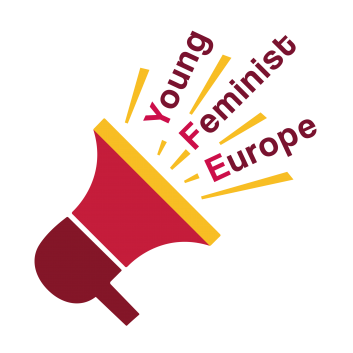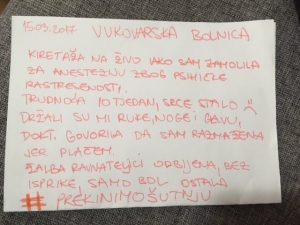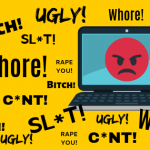”…they kept repeating that me and my child stink, during and after labor…”, ”they told me I would kill my child if I didn’t get the induction”, “…the doctor asked me why I had sex if I didn’t want to give birth..”, “…I am afraid of my second delivery…”, “the doctor told me that women in their 41st week don’t have the right to decide. I was forcefully hospitalized and had an unjustified cesarean section. I couldn’t see my child for 10 hours, and had PTSD for two years as a result…”
Obstetric violence is an intersection between institutional violence and violence against women during pregnancy, childbirth, and postpartum. It includes denial of treatment during childbirth, verbal humiliations, physical violence, invasive practices, disregard of women’s pain, rude treatment, forced medical interventions, and unnecessary use of medication. One investigation showed that for every 4 out of 10 women (41%) the way they were treated during childbirth was detrimental to their dignity and psycho-physical well-being.
Small Country of Big Voices
Croatian Member of Parliament Ivana Ninčević-Lesandrić decided to speak out about her personal experience of curettage without anesthesia after her miscarriage. She went to the hospital where she was tied down and endured 30 minutes of scraping of her uterus. She said it was the most horrible pain she has ever experienced. After that she collected thousands of signatures of other women who experienced the same “treatment”. In response to Ms. Ninčević-Lesandrić’s intervention in the Parliament, Jandroković (Parliament Speaker) responded that he was embarrassed because she was sharing “intimate details”.
An attempt by the Croatian Minister of Health, Kujundžić, to “investigate” the complaint resulted in the head of the clinic going public with confidential patient information about Ms. Ninčević-Lesandrić procedure and accusations that she was lying. These problematic responses to obstetric violence are disappointing yet unsurprising considering the scale and nonchalance with which this form of violence against women is practiced across the world.
Since the Croatian Parliamentary episode, Croatian organization RODA called for other women to share their experiences and the realities they face in hospitals with the hashtag #PrekinimoŠutnju (#BreakTheSilence). The 16-day awareness campaign by RODA led to the receipt of 400 letters by women who had faced damaging and traumatic obstetric experiences. The letters included details of the experiences such as dates and names of hospitals and were handed over to the Minister of Health who eventually conducted investigations in all the accused hospitals.
…care given to women from ethnic minority backgrounds, especially asylum seekers and newly arrived refugees, is substandard.
In November 2018, Ipsos surveyed a nationally representative sample that found that about 29% of women had curettage after an abortion, puncture, biopsy or suture. Among them, 32% said it was performed without any medication to numb the pain. 9% of women in the total population of women have had gynecological experiences without numbing agents.
The topic came to light internationally earlier this year when 23-time Grand Slam tennis champion, Serena Williams, revealed the extent of complications around the birth of her daughter last year and drew attention to the startling disparity in maternal death numbers between white and black mothers in the US. In the UK, there are no official figures around maternal death and race, but a report by Charles Anawo Ameh and Nynke van den Broek found evidence to suggest that care given to women from ethnic minority backgrounds, especially asylum seekers and newly arrived refugees, is substandard.
What is Being Done?
While the Croatian government hasn’t done much to resolve this issue, the UN Special Rapporteur on Violence against Women has announced that it is preparing a special thematic report on inappropriate behavior and violence in the care of women’s reproductive health, with a particular focus on childbearing violence. It was presented at the UN General Assembly in October of 2019.
Some general advice to women who may be facing or have faced this type of violence is to know that this is a common type of gender violence that disproportionately affects marginalized groups. We encourage women to reach out to support groups, make official complaints against these institutions and to not let individuals or institutions silence you!
“She told me I was old and that I couldn’t give birth the natural way. …and that this pain was nothing. When I started to feel like I was dying, then it was almost done!!! #BreakTheSilence”
“2011, KBC Rijeka. Sewing of the lining after the delivery. They gave me local anesthesia, it didn’t work. The doctor is sewing me without anything, I am screaming for her to stop, that I am in pain. She asked: “Why are you screaming?“, and kept going. #BreakTheSilence”
“Curettage without medication even though I asked for it. Pregnant for 10 weeks, heart stopped. They were holding my arms, legs and head. The doctor was telling me how spoiled I was. My complaint didn’t do anything, only the pain is still there. #BreakTheSilence“






Average Rating